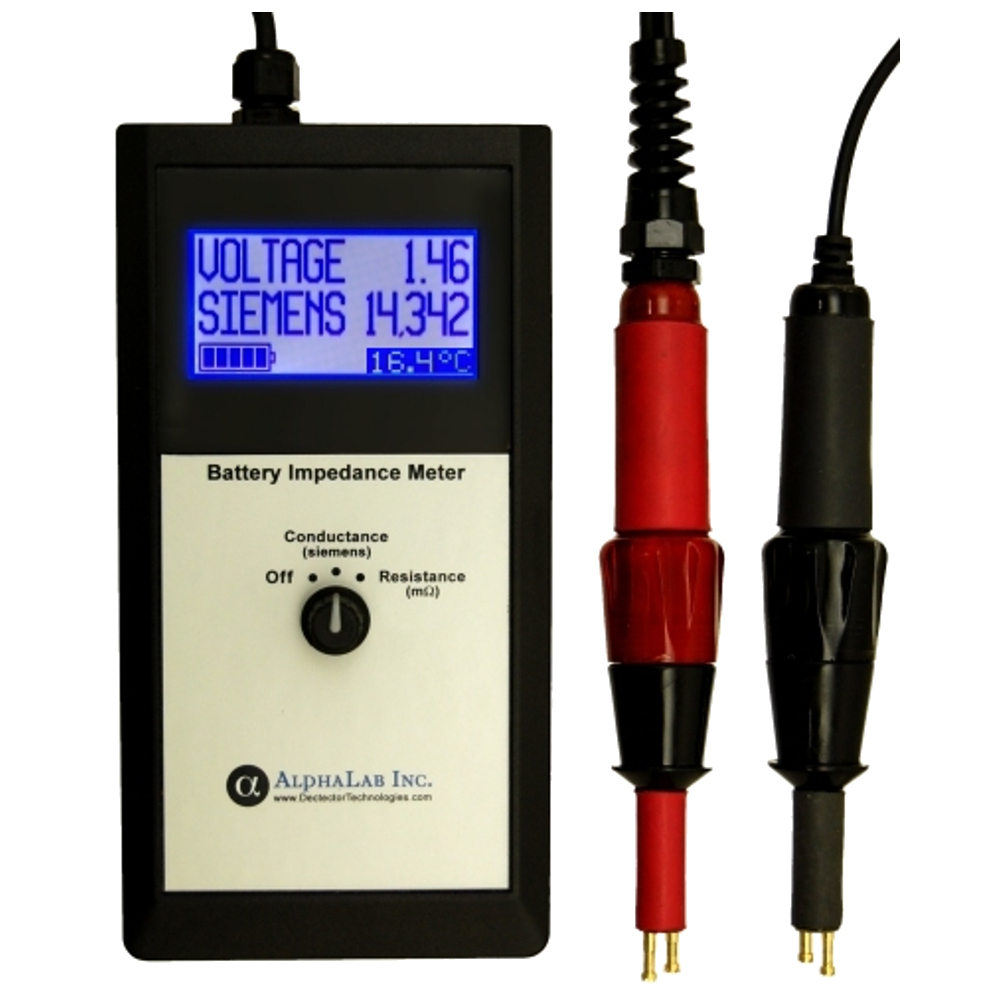Description
Operation is fast and simple. Just press the spring-loaded probes onto the two poles of the battery. After 1.5 seconds, the unit beeps (indicating good contact) and displays the battery voltage and either the number of siemens or milliohms, depending on the knob setting. The display continues to show these numbers after the probes are removed; it resets only when the probes are pressed onto the next battery. The impedance and voltage of any battery between 1.2 and 60 volts can be read. Because of the wide range of voltages, even single low-voltage cells, such as NiMH, can be measured. The manufacturers of some batteries specify impedance in milliohms while other specify in siemens (one divided by the resistance in ohms). This meter will display both types of impedance for any given battery. Accuracy is +/- 2% of the value.
After a battery has been in service for an extended time, the impedance will begin to change. If it has changed by 20% or more (depending on battery class) from its original value, the battery should be replaced. (The number of milliohms will increase and the number of siemens will decrease.) A typical 12 volt lead acid battery has a conductance of 2 to 4 siemens per amp hour (AH) of capacity — valid up to about a 1000 AH. (At higher capacity, contact resistance decreases the conductance to a number somewhat below this range.) The resistance is the inverse of conductance . For example, a 500 AH 12 V lead acid battery will have an initial conductance of typically 1500 siemens, which corresponds to a resistance of 6.6 milliohms. If a chain of 500 AH batteries measured about 1500 siemens when new, any aged battery measuring under 1200 siemens should be replaced. Similar guidelines apply to other battery chemistries.
For a given battery chemistry, the impedance changes slightly with temperature in a predictable way. The Battery Impedance Meter also displays temperature so that the baseline conductance or resistance can be corrected for temperature if necessary. For example if 500 AH batteries are hot, a threshold of 1150 instead of 1200 siemens could be applied. These correction factors are included in the instructions.
Features
- Data Logging
Record data sets in the field then download them using AlphaApp over USB.
|
SPECIFICATIONS: Battery Impedance Meter 0°C (32°F) to 43°C (109°F) Battery Voltages 1.2- 60 V |
|
|---|---|
| Resistance Range/Resolution: | 19.999 milliohms / 0.001milliohms |
| Conductance Range/Resolution: | 10-20,000 siemens in steps of 1 siemen |
| Voltage Range/Resolution: | 60.00 volts/ 0.01 volts |
| Accuracy: | +/- 2% of reading +/- .030 milliohms |
| Probes: | Spring loaded. Meter operates automatically when battery is connected. 6.64 x 1.07 in; 168.6 x 27.2 mm |
| Time/Sample: | 3 seconds. Then display is held. |
| Display: | Backlit screen 2.76 x 1.44 in; 70 x 36.5 mm |
| Meter Size: | 7.7 x 3.9 x 1.7 in; 194.8 x 100.6 x 45.2 mm |
| Weight: | 17.9 ounces; 508 grams |
| Battery: | (3) AA batteries (~ 25 hour life) “Low Battery” indicator |


